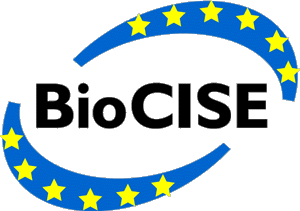 |
Resource Identification for a
Biological Collection Information Service in Europe Results of the Concerted Action Project |
 |
Resource Identification for a
Biological Collection Information Service in Europe Results of the Concerted Action Project |
[Contents] [BioCISE Home | The Survey | Collection catalogue | Software | Standards and Models]
Pier-Luigi Nimis and Linda Olsvig-Whittaker
P. 52 in: Berendsohn, W. G. (ed.), Resource Identification for a Biological Collection Information Service in Europe (BioCISE). - Botanic Garden and Botanical Museum Berlin-Dahlem, Dept. of Biodiversity Informatics.
An essential feature of the planned meta-information system is its scalability. It should support access on all levels, from the most general (e.g. only the address and name) to the level of the individual unit. The first extreme has already been demonstrated (see Chapter X), but the possibility to access unit-level information must also be demonstrated from the outset of the Service's implementation. Ideas from two initiatives originally planned as separate proposals (Mediterranean BioCISE, European Lichen Database) were presented as a project proposal able to present an advanced stage of the Service.
To be feasible at reasonable cost, the topic of the prototype has to be restricted both geographically and taxonomically, so that it can be developed in parallel with the larger metadata thesauri (see Chapter XI). It was decided to use the "Lichens of the Mediterranean" as the model group because a widely accepted standard taxonomy exists, circumventing the complication of the taxonomic thesaurus.
The Mediterranean region lends itself to demonstration of a unit-level access prototype, since it comprises a natural biological unit. Thus, it is logical to pool the fragmented national information sources to provide an overview of the biological status of the Mediterranean. The Mediterranean community of lichen specialists already forms an integrated network, so the question of a working geo-ecological thesaurus can be solved pragmatically (Grube & Nimis 1997). The proposed prototype is also restricted in its representation of user interests. Unit-level data on Mediterranean lichens would generate an information system highly relevant for environmental management (lichens are important indicators for air quality and other factors) as well as for systematics and ecology.
The prototype will concatenate and maintain species and location information contributed from existing biological collection and observational databases around the Mediterranean and relevant holdings elsewhere. The proposed database network would be based on existing digitised biological databases, which would be organized around national clearinghouse computers for the participating nations. The database centre would include a GIS-based Internet service, enabling graphic selection of regions of interest and simple online queries for species and areas. The characterization of units in the service would use the metadata attributes provided by the Service and would provide low-level metadata values to the system for the geo-ecological and taxonomic attributes.
© BioCISE Secretariat. Email: biocise@, FAX: +49 (30) 841729-55
Address: Botanischer Garten und Botanisches Museum Berlin-Dahlem (BGBM), Freie
Universität Berlin, Königin-Luise-Str. 6-8, D-14195 Berlin, Germany